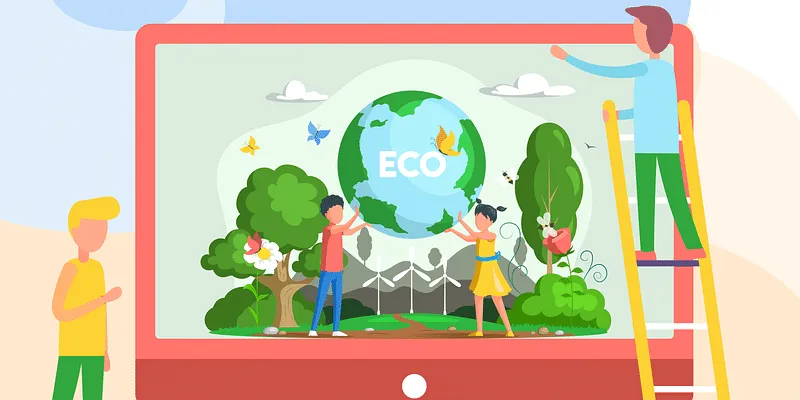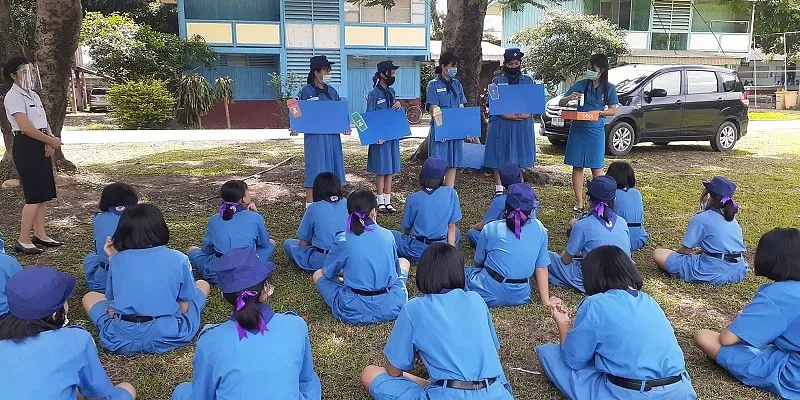Environmental education in an outdoor classroom
Environmental education has the potential to bring realisation, sensitivity, and actions in people's lives. And what better way to learn and transform than an outdoor classroom in the midst of nature!
Climate change and the pandemic have underlined the importance of being in a natural environment. Our inherent bond with the world around us is everlasting. There is a dire need to identify problems threatening the environment, find creative solutions, and care for the environment.
There is increasingly a shift from stationary classrooms to outdoor education. Outdoor education provides abundant opportunities for students to engage in real-world issues that transcend classroom walls. Students can see the relevance of their classroom studies in the context of the complex environmental issues confronting our planet and subsequently they can acquire the skills required to be innovative problem solvers and powerful advocates.

There is an urgent need to change the way we teach our future generation. In fact, green education should be a mandatory part of the curriculum so that students can easily adopt habits to conserve and protect the environment. It has the potential to bring realisation, sensitivity, and actions in everyone’s life.
Environmental education is not limited to providing information about the environment. It helps in integrating academic disciplines, stimulates social and academic development in young minds, and encourages natural environment conservation. It is vital for creating strategies to sustain, boost, and preserve the environment.
Nature, the eternal inspiration
To learn, one must experience. To teach, one must first inspire. And nature provides massive inspiration. An outdoor classroom would enable one to augment and radically transform educational practices. One can learn underlying theories and how to apply them practically. One can learn about biodiversity loss, climate change effects, and sustainable development and develop the skills to become a reflexive educator, helping foster environments and activities wherein everyone can join in.
Studying outside, amidst nature, is helpful not only for nature preservation but also for a healthy mind. It works as a therapy for people who spend more time in nature. In Japan, it is used as nature therapy, called ‘Shirin Yoku’, which translates to ‘nature therapy’. According to a study conducted by Yoshifumi Miyazaki, a nature therapy expert, people who walk in a forest for 40 minutes have lower levels of stress hormones.
To raise awareness about the issues impacting our environment and find solutions to them, we have to bring nature to the class or take the class outside.
The environmental education sector is flourishing. It helps students as well as nature in many ways.
Boost critical, creative thinking with imagination
Nature provides peace of mind, which sparks one’s imagination and creativity. It helps in critical thinking by inspiring students to research how and why some things happen in a specific way and what can be done to solve complex environmental issues. Through environmental education, one would know what should be done at the time of natural calamities to save people. It motivates the young generation to help with decision- and policy-making.

Encourage a healthy lifestyle
Due to the pandemic and the subsequent lockdowns, many people suffered psychological distress. These days even doctors suggest that people go outside, in the midst of nature, for healing and reducing problems such as anxiety, stress, and depression. Outside activities and studying outside help deal with health issues such as obesity, which is prevalent in today’s children who are glued to smartphones and computers.
Take responsibility for actions
Environmental education helps the younger generation understand how their actions are affecting nature and what steps are needed to address the complex environmental problems and keep the environment healthy and sustainable for the future. It also stresses the importance of using renewable resources, so that we can save resources for the future. Apart from this, students can educate people by creating awareness about the ways to protect the planet.
Edited by Swetha Kannan
(Disclaimer: The views and opinions expressed in this article are those of the author and do not necessarily reflect the views of YourStory.)








